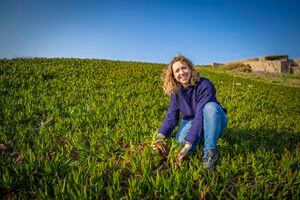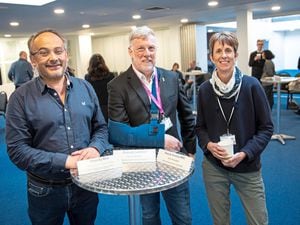Islanders being asked to help keep sour fig under control
SOUR fig is drowning out Guernsey’s native flora and islanders are being asked to help turn the tide.

The South African plant has become recognisable in patches on the south cliffs and west coast headlands, with its fleshy stems and pink and yellow flowers. But its fast-growing nature means it blankets the ground and restricts the growth of native plants.
Jamie Hooper from Environment Guernsey is calling for islanders to help by pulling up the plants.
He said the problem had been getting worse in recent years.
‘We are seeing mild winters,’ he said.
‘The plants used to get knocked back by very cold winters, but in the last 20 years we have not seen very many – the last was the Beast from the East in 2018. So it is gaining ground.’
Guernsey Biodiversity Officer Julia Henney said she backed Mr Hooper’s idea.
‘It would definitely be good to get on top of it,’ she said.
‘What often happens is that you get these big established patches and that can be quite hard work to remove. But those big patches have to start somewhere – often as small patches.’
As well as decimating native plants, it also does not support much wildlife. Mr Hooper said that when pulled up, there would rarely be any animals revealed, beyond a few woodlice and spiders. Even bees do not get a pollen-rich meal from the flowers, Mr Hooper said.
While the plants grow and re-establish themselves quickly, pulling them up is not that hard.
‘It can be pulled quite easily,’ Mr Hooper said.
‘However, some pieces do break off and sometimes there are brambles tangled up in them. Also some areas are quite hard to reach and are on uneven ground.’
The plant does compost down quite well. Mr Hooper said the best method was to turn it upside down so it can dry out and it can then be collected. It can be composted in home gardens or taken to the Guernsey green waste site at Mont Cuet.
Environment Guernsey has been working on behalf of Agriculture, Countryside and Land Management Services to help remove the plants from some areas such as the Lihou headland, while the Guernsey Conservation Volunteers have also been targeted the plant in areas such as Les Tielles, which has made a big impact.
Mr Hooper urged islanders to only pull up the plant in safe areas and not go near the cliff edges.
While it is well established on the cliffs, it is also widespread on the west coast, at areas such as Rousse, Port Soif and Albecq.





